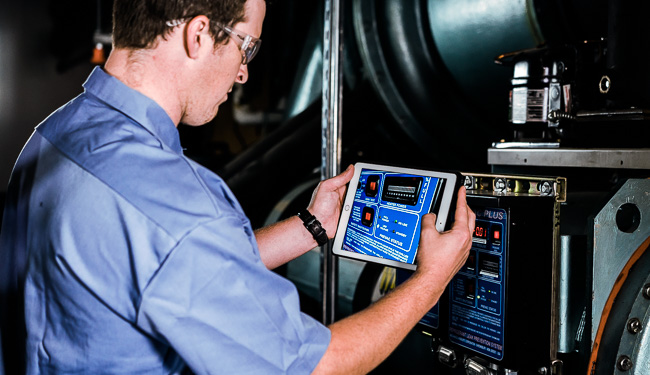
How Customised T-Shirt Printing Can Boost Your Business Visibility
Did you know that consistent brand presentation across all platforms can increase revenue by up to 23%? According to a study by Lucidpress, brands that maintain strong visual consistency are more easily recognized by consumers, and 90% of shoppers expect a consistent experience across different channels. In a world saturated with digital ads and fleeting impressions, businesses need creative, cost-effective ways to cut through the noise and make a lasting impression. Customised t-shirt printing offers one of the most powerful yet underutilised marketing tools to boost your business visibility, build brand recognition, and engage your audience wherever they go.
The Power of Wearing Your Brand
Customised t-shirts turn everyday clothing into walking billboards. When your employees, customers, or brand ambassadors wear t-shirts featuring your logo, tagline, or message, they become mobile promoters of your business. This form of advertising is highly visible and reaches a broad audience wherever the wearer goes, offering organic exposure that lasts far beyond the initial investment.
Unlike traditional ads that may only run for a limited time, a well-designed custom t-shirt can be worn repeatedly, exposing your brand multiple times to different groups of people. This repeated visibility builds brand recognition and trust, which are critical factors in influencing consumer decisions.
Why Customised T-Shirts Work for Business Visibility
1. Affordable and High Impact
Compared to digital ads, billboards, or TV commercials, customised t-shirts are relatively inexpensive to produce, especially when ordered in bulk. The cost per impression (CPI) of a branded t-shirt is extremely low since the shirt can be worn multiple times in various locations. This makes customised t-shirt printing one of the most cost-effective marketing tools available.
2. Creates a Sense of Community
When employees or customers wear your customised shirts, they feel part of something bigger — a community or brand family. This emotional connection increases loyalty and encourages word-of-mouth marketing. Happy customers wearing your brand naturally spark conversations, which can lead to referrals and increased sales.
3. Versatile Marketing Tool
Customised t-shirts are adaptable for many marketing purposes:
- Trade Shows and Events: Distribute branded shirts to attendees or staff to create a cohesive, professional look.
- Promotional Giveaways: Use t-shirts as free gifts during promotions to incentivise customers.
- Uniforms: Provide employees with branded apparel to reinforce your company identity.
- Fundraising and Charity: Partner with causes and sell branded shirts to raise funds and spread your brand message.
4. Easy to Design and Personalise
Modern printing technologies, such as screen printing, heat transfer, and direct-to-garment (DTG) printing, enable businesses to produce vibrant, durable, and customised t-shirts with ease. You can tailor designs to fit your brand colors, slogans, or even seasonal campaigns, keeping your marketing fresh and relevant.
How Customised T-Shirts Enhance Brand Awareness
Brand awareness is crucial for growth — if customers don’t recognize or remember your business, chances are they won’t buy from you. Here’s how customised t-shirts help increase brand awareness effectively:
Increased Reach
Each person wearing your customised t-shirt acts as a brand ambassador, potentially reaching hundreds or thousands of people daily. Whether walking around town, attending an event, or commuting, your brand gets exposed to new eyes, expanding your audience organically.
Builds Recognition Through Repetition
Repetition is a key principle of effective advertising. Custom t-shirts worn repeatedly by your team or customers reinforce your logo and brand message, making it easier for people to remember your business when they need your products or services.
Sparks Conversations and Curiosity
A creative or clever t-shirt design can catch people’s attention and encourage them to ask questions about your business. This opens the door for meaningful conversations where you can explain what makes your brand unique, helping to convert interest into sales.
Strategic Tips for Customised T-Shirt Printing Success
To maximise the impact of your customised t-shirts, it’s essential to approach the design and distribution strategically.
1. Keep It Simple and Clear
Your t-shirt design should be easy to read and visually appealing from a distance. Avoid cluttering the shirt with too much information. Instead, focus on your logo, brand name, and a simple tagline or call to action.
2. Choose the Right Colors
Colors evoke emotions and influence perceptions. Select colors that reflect your brand personality and stand out in different environments. High contrast between text and shirt color improves readability.
3. Use Quality Materials
The shirt quality matters immensely when it comes to customised t-shirts printing. Investing in high-quality customised t-shirts printing ensures that the apparel is comfortable, durable, and visually appealing. Shirts made from cheap materials tend to fade, shrink, or lose shape quickly, which can reduce the likelihood of repeat use and weaken your brand impression. High-quality printing techniques also maintain vibrant colors and crisp logos that stand out over time. When customers or employees wear well-made, attractive shirts, they become enthusiastic brand ambassadors who proudly promote your business again and again.
4. Target Your Audience
Consider who will be wearing the shirts and where. If your business targets young adults, opt for trendy fits and styles. For corporate clients, classic and professional designs work better. Tailor your designs to suit the preferences of your audience for maximum engagement.
5. Incentivise Wearing
Encourage employees, customers, or event attendees to wear your shirts by offering incentives such as discounts, contests, or social media shoutouts. When people feel appreciated, they are more motivated to promote your brand.
Measuring the Impact of Customised T-Shirt Marketing
One of the benefits of customised t-shirt printing is its trackable impact:
- Social Media Engagement: Encourage people to post pictures wearing your shirt with a branded hashtag. Track how many posts, likes, and shares you receive.
- Referral Tracking: Include a QR code or special promo code on the shirt to measure conversions from t-shirt marketing.
- Surveys and Feedback: Ask customers how they discovered your business to gauge the reach of your t-shirt campaign.
Real-Life Examples of Businesses Boosting Visibility
Many businesses have successfully used customised t-shirts to elevate their brand presence:
- Local Cafés and Restaurants: Staff wearing branded t-shirts create a friendly, recognisable atmosphere. Patrons become walking adverts as they wear shirts outside.
- Startups: New companies often use t-shirts as swag at trade shows and networking events to get noticed.
- Nonprofits: Custom tees spread awareness about causes while generating funds through sales.
- Sports Teams and Clubs: Custom shirts build team spirit and promote sponsors simultaneously.
Customised t-shirt printing is more than just a fashion statement — it’s a strategic marketing tool that can significantly boost your business visibility. With its affordability, versatility, and ability to create emotional connections, it offers a tangible way to expand your brand reach and build lasting recognition.
By investing in quality designs, materials, and distribution strategies, your business can turn everyday apparel into powerful promotional assets that travel wherever your customers and employees go. In an era where brand visibility is key to success, customised t-shirts provide a unique, cost-effective edge that helps your business stand out and grow.













